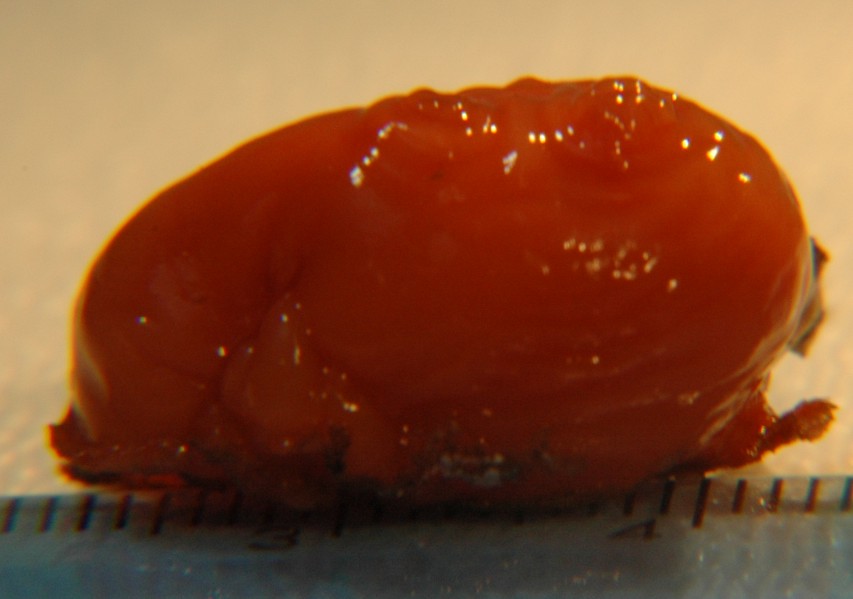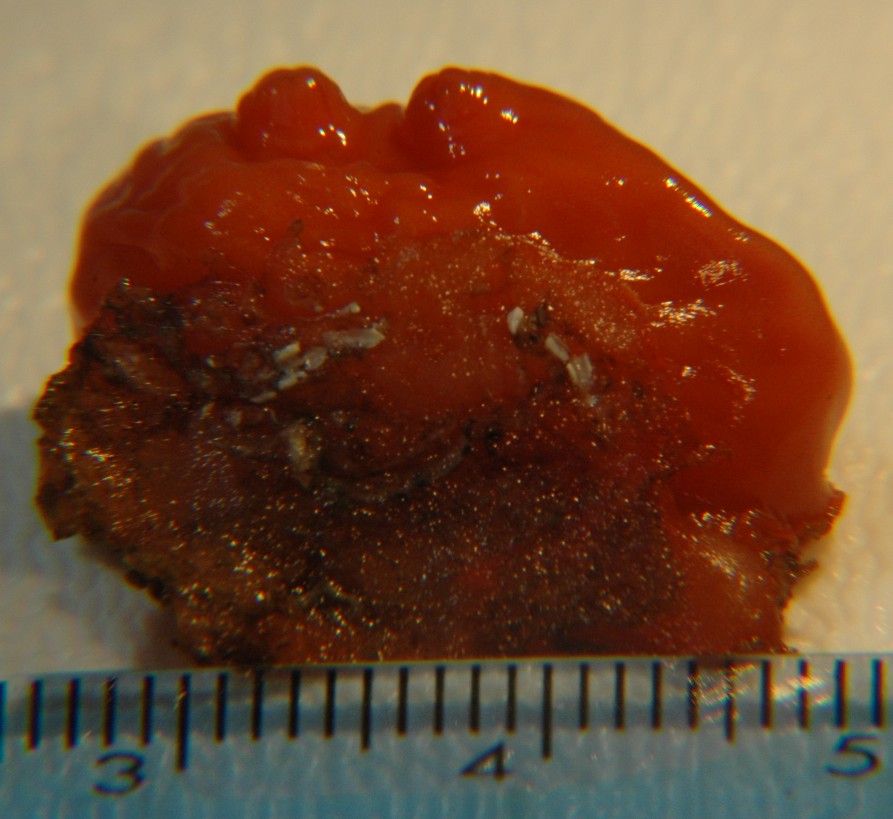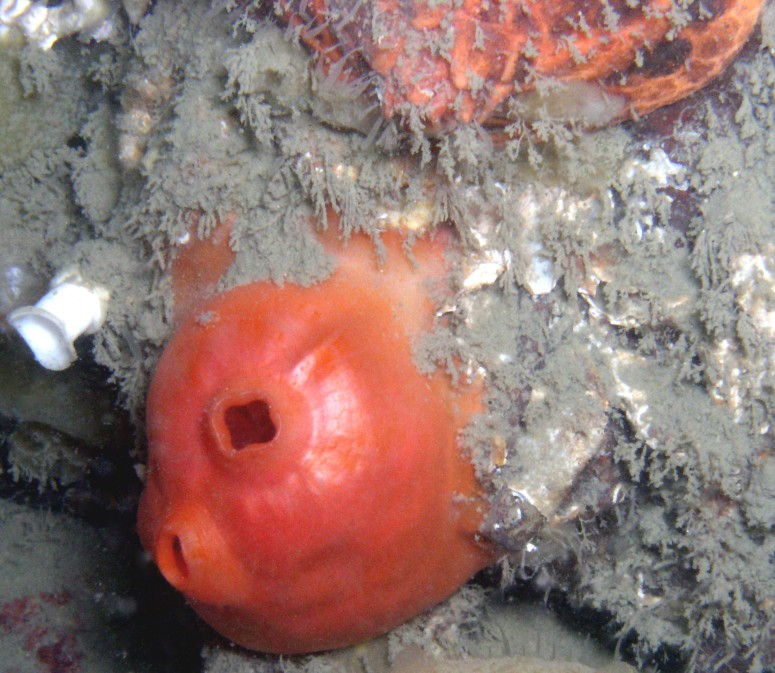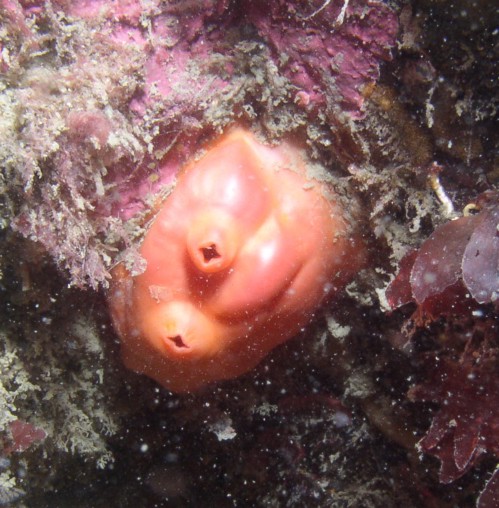Cnemidocarpa finmarkiensis Kiaer, 1893Common name(s): Broad base sea squirt, Orange sea squirt, Red sea squirt, Shiny orange sea squirt, Shiny red tunicate, Finmark's tunicate |
|
| Synonyms: Cnemidocarpa joannae, Polycarpa finmarkiensis, Styela elsa, Styela finmarkiensis, Styela joannae, Styela stimpsoni, Tethyum finmarkiensis |  |
| Phylum Chordata
Subphylum Urochordata Class Ascidiacea Order Stolidobranchia Family Styelidae |
|
| Cnemidocarpa finmarkiensis from 15 m depth off Northwest Island. Scale is in centimeters and mm | |
| (Photo by: Dave Cowles, July 2005) | |
How to Distinguish from Similar Species: Other tunicates of similar shape are not usually pinkish-red, or have a wrinkled tunic. The sea peach, Halocynthia aurantia, is a similar smooth, shiny pinkish color but it has broader siphons of unequal size and is taller than it is wide. Of other common local smooth, orange tunicates, Metandrocarpa taylori is a social ascidian, with multiple individuals living near each other and connected by narrow stolons or sheets of tunic. Distaplia occidentalis is a compound ascidian with many individuals within the same tunic.
Geographical Range: Alaska to Point Conception, CA; most common from Washington north. Also northwestern Pacific, circumboreal in the Arctic
Depth Range: Very low intertidal to at least 50 m (540 m in Japan)
Habitat: Hard substrates in well-circulated waters. Sometimes found on floats. Sometimes lives in holes.
Biology/Natural
History:
This species
is hermaphroditic. Fertilization is external, during the
summer.
The tunic is thin but tough, with 12.4% organic content. Just
over
half the organic matter in the tunic is tunicin (a carbohydrate); the
rest
is protein. Vanadium content of the body is low (but higher
in the
tunic?) Predators include the seastar Orthasterias
koehleri.
The copepod Pygodelphys aquilonarius may live
symbiotically in the
branchial chamber and many invertebrates may live around the base.
| Return to: | |||
| Main Page | Alphabetic Index | Systematic Index | Glossary |
References:
Dichotomous Keys:Flora and Fairbanks, 1966
Kozloff 1987, 1996
Smith and Carlton, 1975
General References:
Gotshall,
1994
Harbo,
1999
Kozloff,
1993
Morris
etal., 1980
Ricketts
et al., 1985
Sept,
1999
Scientific Articles:
Zeng,
Liyun, Molly W. Jacobs, and Bill J. Swalla, 2006.
Coloniality
has evolved once on Stolidobranch ascidians. Integrative and
Comparative
Biology 46:3 pp 255-268
Web sites:
General Notes and Observations: Locations, abundances, unusual behaviors:

In this side view one can see the two siphons (partly retracted) and
some material adhering to the tunic.

In this underwater photo of Cnemidocarpa finmarkiensis
near
Northwest Island by Kirt Onthank (Feb 2006), the siphons are open and
partly
extended. The animal above is the sea cucumber Psolus
chitonoides

Another underwater photo by Kirt Onthank, July 2007
Authors and Editors of Page:
Dave Cowles (2005): Created original page